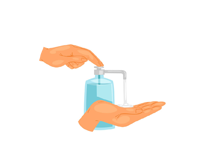Insulin Lispro
Introduction
Insulin Lispro is a fast-acting insulin used to control high blood sugar levels in people with diabetes mellitus. It works more quickly than regular human insulin, helping patients manage blood glucose spikes that occur after meals. Insulin Lispro is often prescribed for both type 1 and type 2 diabetes, either alone or in combination with other insulins or antidiabetic medications. Regular usage helps prevent serious complications like kidney damage, nerve problems, and blindness associated with uncontrolled diabetes.
Medicine Not Available for Insulin Lispro
Uses of Insulin Lispro
- Used to control blood sugar levels in people with Type 1 and Type 2 diabetes.
- Helps prevent hyperglycemia (high blood sugar) after meals.
- Commonly used as a part of an insulin regimen alongside long-acting insulin.
- Effective in controlling postprandial blood glucose spikes.
How Insulin Lispro works
Insulin Lispro works by mimicking the natural insulin produced by the pancreas, but it acts much faster. Once injected, it begins to lower blood sugar levels within about 15 minutes and has its peak effect within 30 minutes to an hour. It helps transport glucose from the bloodstream into cells for energy, preventing high blood sugar levels that could lead to serious health issues.
Benefits of Insulin Lispro
- Rapid action helps to manage blood sugar levels effectively after meals.
- Reduces the risk of high blood sugar levels (hyperglycemia) and complications related to diabetes.
- Improves overall blood glucose control when used as part of an insulin regimen.
- Flexible dosing allows for better control around mealtimes and varying food intake.
How to take Insulin Lispro
Insulin Lispro is typically administered as a subcutaneous injection in the fatty tissue of the abdomen or thigh. It is important to follow your doctor `s instructions on how to inject insulin correctly. The dosage is usually determined based on your blood sugar levels and meal patterns. It is generally taken just before meals to control the rise in blood sugar levels after eating.
Type of Dosage Available
- Vials
- Pre-filled pens
- Insulin pumps (for continuous infusion)
Side effects of Insulin Lispro
- Common side effects include low blood sugar (hypoglycemia), injection site reactions, and weight gain.
- Severe hypoglycemia can occur if the insulin dose is too high relative to food intake or exercise.
- Rare side effects may include swelling, allergic reactions, or lipodystrophy (changes in fat distribution at the injection site).
Safety advice
- Monitor your blood sugar levels regularly to ensure you are receiving the correct dose.
- Consult your healthcare provider if you experience symptoms of low blood sugar, such as dizziness, shakiness, or sweating.
- Inform your doctor if you have any kidney, liver, or heart issues, as insulin dosages may need to be adjusted.
- Be cautious of possible interactions with other medications, including oral diabetes medications, and adjust the insulin dose accordingly.
- Avoid missing doses, and always carry a source of glucose in case of hypoglycemia.
Frequently Asked Questions (FAQs)
Q: What is Insulin Lispro used for?
A: Insulin Lispro is used to control blood sugar levels in people with Type 1 and Type 2 diabetes, especially after meals.
Q: How quickly does Insulin Lispro work?
A: Insulin Lispro begins to lower blood sugar levels within about 15 minutes and reaches its peak effect within 30 minutes to 1 hour after injection.
Q: Can Insulin Lispro cause low blood sugar?
A: Yes, if you take too much Insulin Lispro, or miss a meal, it can cause low blood sugar (hypoglycemia). Always monitor your blood sugar levels to avoid this.
Q: What are the common side effects of Insulin Lispro?
A: Common side effects include hypoglycemia, weight gain, and possible irritation at the injection site.
Q: Where can I buy Insulin Lispro?
A: Insulin Lispro can be purchased from Zeelab Pharmacy at the best price with a valid prescription from your healthcare provider.
Disclaimer : Zeelab Pharmacy provides health information for knowledge only. Do not self-medicate. Always consult a qualified doctor before starting, stopping, or changing any medicine or treatment.
Download India's most affordable pharmacy app
- Compare with medicine prices
- Save upto 90% on your medicine bills

Temperature Controlled storage and delivery

Regular Sanitization

Disinfected Packaging













 Added!
Added!